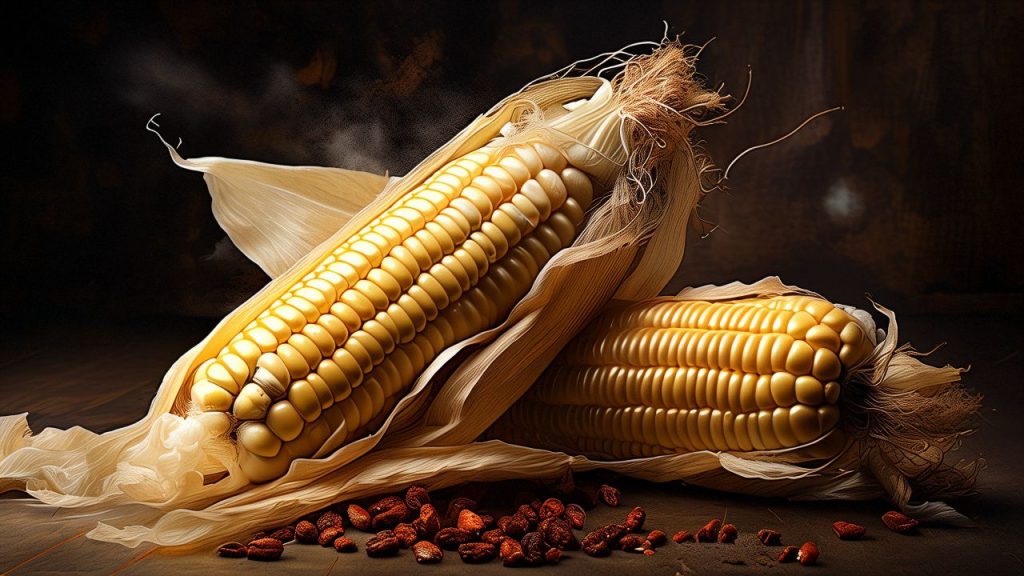Experts believe that around 35% to 50% of cancer cases are linked to diet. This important finding comes from extensive research conducted by experts worldwide, providing valuable insights for cancer prevention. Studies have demonstrated that various dietary factors can contribute to cancer, including an increased risk of cancer associated with consuming moldy food.
What does moldy food look like?
Whether it’s raw grains or processed grain products, if they have some moisture and are left at a certain temperature for a while, mold will start growing in them. For instance, moldy rice loses its shine and looks pale yellow or light gray. Seriously moldy rice can turn dark gray, green, or even light black, becoming soft and crumbly. Moldy grains may smell musty or off. It can be hard for inexperienced folks to spot mildly moldy food without careful inspection.

In a warehouse, moldy corn kernels may show darkening or turning green at the breakage points. Cakes left out may develop green, white, or black spots on the surface; while leftover bread or meals left for days could grow fuzzy molds in colors like gray-white, gray-black, yellow, or green. Moldy peanuts change from pure white to yellow, and poorly stored or aged grains are likely to get contaminated by mold after a couple of years.
What are the hazards caused by moldy food?
Moldy corn(moldy food) is a no-go for eating or feeding animals. The main molds found in moldy corn include aflatoxin B1, vomitoxin, and zearalenone. Aflatoxin B1 can mess up your liver, causing cell damage and even death – it’s a real liver toxin. Even a tiny bit of aflatoxin in mammal cell cultures can kill cells, making it a cell poison. The World Health Organization says aflatoxin is a serious cancer-causing agent.
Studies reveal that just 1mg of aflatoxin can trigger cancer, and a hefty 20mg dose can straight-up kill an adult. Moldy corn(moldy food) often packs vomitoxin and zearalenone, which seriously mess with your health. If you get poisoned, you might feel sick to your stomach, throw up, get a headache, feel dizzy, have tummy troubles, and more. Livestock and poultry that chow down on vomitoxin can lose their appetite, puke, and have tummy issues, messing with their immune system and ability to reproduce, and lowering the activity of certain enzymes.
Don’t eat moldy corn(moldy food) or feed it to animals. The main bad guys in moldy corn are Aflatoxin B1, Vomitoxin, and Zearalenone. Aflatoxin B1 can really mess up your liver, causing damage and even cell death. It’s such a strong liver toxin that even a tiny bit can kill cells, making it a serious cytotoxin. The World Health Organization has even labeled Aflatoxin as a top-tier carcinogen.
Research shows that just 1mg of Aflatoxin can lead to cancer, and 20mg can kill an adult outright. Moldy corn(moldy food) often also has Vomitoxin and Zearalenone, which are super harmful to your health. If you get poisoned, you might feel stomach pain, nausea, throw up, get headaches, feel dizzy, have abdominal pain, diarrhea, feel weak all over, have a dry mouth, and some folks might even get a fever or their face might turn red. When animals get poisoned with Vomitoxin, they usually don’t want to eat, throw up, have diarrhea, and it can mess with their immune and reproductive systems, plus lower the activity of certain enzymes.
In the 1960s, a shocking event took place in the UK when 100,000 turkeys died suddenly, causing a global uproar. It was later discovered that the turkeys had been fed peanut meal imported from Brazil, which was actually the leftover residue after extracting oil from peanuts. Further investigation revealed a significant presence of Aspergillus flavus mold and its toxin, aflatoxin, in the peanut meal. Originally a protein-rich feed suitable for poultry and livestock, the contaminated peanut meal turned out to be the main culprit behind the mass turkey deaths. Additionally, as far back as 1961, studies had already shown that feeding rats contaminated with aflatoxin for 30 weeks resulted in the development of liver cancer.
The information above shows that eating moldy grains(moldy food) and feed can cause liver cancer in both humans and animals. Esophageal cancer and Gastric Cancer are also linked to consuming food contaminated with mold toxins. Acute poisoning from moldy grains can result in rapid death for both humans and animals. Moldy foods, grains, and feeds include rice, millet, wheat, corn, processed grain products like pastries, bread, rice, noodles, and other cooked foods, as well as feed such as peanut meal. The International Agency for Research on Cancer (IARC) has determined that aflatoxins are known to cause cancer in humans based on solid evidence.
How many types of mold can cause cancer?
There are more than ten types of mold toxins with known chemical structures that have been confirmed to cause cancer. For example, aflatoxin produced by Aspergillus flavus, ochratoxin produced by Aspergillus ochraceus and Penicillium verrucosum, and aflatoxin produced by Aspergillus flavus, parasiticus, and nomius are all substances that can lead to liver cancer in lab animals. Citrinin from Monascus purpureus and Penicillium citrinum can trigger kidney tumors in mice. Patulin from Penicillium patulum, verrucosidin from Penicillium verrucosum, penicillic acid from Penicillium crustosum, and citrinin from Penicillium citreonigrum can all cause liver cancer in mice.
Fumonisin from Fusarium moniliforme and gliotoxin from Aspergillus fumigatus can cause squamous cell carcinoma in the stomach and esophagus of rats. Besides, there are other mold toxins that can lead to liver cancer, sarcomas, stomach cancer, colon cancer, and tumors in the breast and ovaries of experimental animals. Research has shown that some molds can help form carcinogenic nitrosamines in food. Places with severe contamination of aflatoxin in food have a higher incidence of liver cancer. Aflatoxin mainly contaminates grains, oils, and their products like peanuts, peanut oil, corn, rice, and seeds. Additionally, nuts such as walnuts, almonds, hazelnuts, dairy products, dried salted fish, dried chili peppers, and dried radish strips can also be affected.
To prevent cancer, how can we prevent mold growth in food?
Preventing mold growth involves a series of steps. When you’re harvesting crops, make sure to do it quickly and try to keep the grains dry, away from rain. After harvesting, it’s crucial to let the grains dry out in the sun or use machines to ensure the moisture content is below 16%. Grain storage areas need good ventilation, should be kept dry, cool, and mold-resistant. Mold grows fastest and produces the most toxins when the grain temperature is between 25°C and 30°C, with a moisture content of 17%-18%. During grain transportation, avoid moisture and temperature changes. Keep processing facilities and equipment clean and dry. Food stores and vendors should have proper conditions for storing food, with clear expiration dates.
For slightly moldy grains that you are reluctant to throw away, what should you do? Obviously, grains that are visibly moldy should not be consumed, nor should they be used as feed for poultry and livestock to prevent poisoning or carcinogenic effects in humans, poultry, and livestock. For grains with very mild mold, such as rice and millet, before cooking, they should be thoroughly washed by hand, rubbed, and rinsed with water to remove the surface mold and its toxins. Ultraviolet light and normal boiling temperature cannot destroy aflatoxins. Cooking a thin porridge with 0.5% to 1% baking soda can destroy some toxins.

